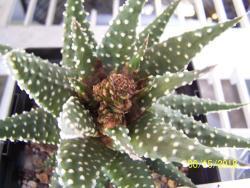Unfortunately, since I'm not sure when carbaryl is no longer legal in CA.

(This must explain when the makers of the trade name sevin switched the active ingredient... I was wondering about that) (Amazon is up on it too try to order Carbaryl if you live in CA you get a big red banner... that translates to no way.)
Neither is Avid now or maybe ever... although many aloe collectors have sworn by it.
So I have have been forced into the expensive miticides that I was hoping to avoid... But at least I seem to have a lifetime supply since they are extremely concentrated and in a largish 250 mL bottle. I have also switched to a rotating regiment of several that all seem to be specific mostly to mites. So hopefully safer for the environment.
So far I'm trying now a monthly rotating application of:
Kontos- Systemic good for adult and larval stages. (They actually recommend rotating applications with other miticides on the bottle)
Forbid- Systemic good for all stages including eggs.
tau-fluvalinate- Never seen anyone report using this for aloe mites, but its also a miticide. Its not systemic but also controls a limited number of other sucking insects like scale, and mealybugs that have shown up recently. This is also especially bee safe as its actually used inside of bee hives to control bee mites. (who knew.)
So far so good.

